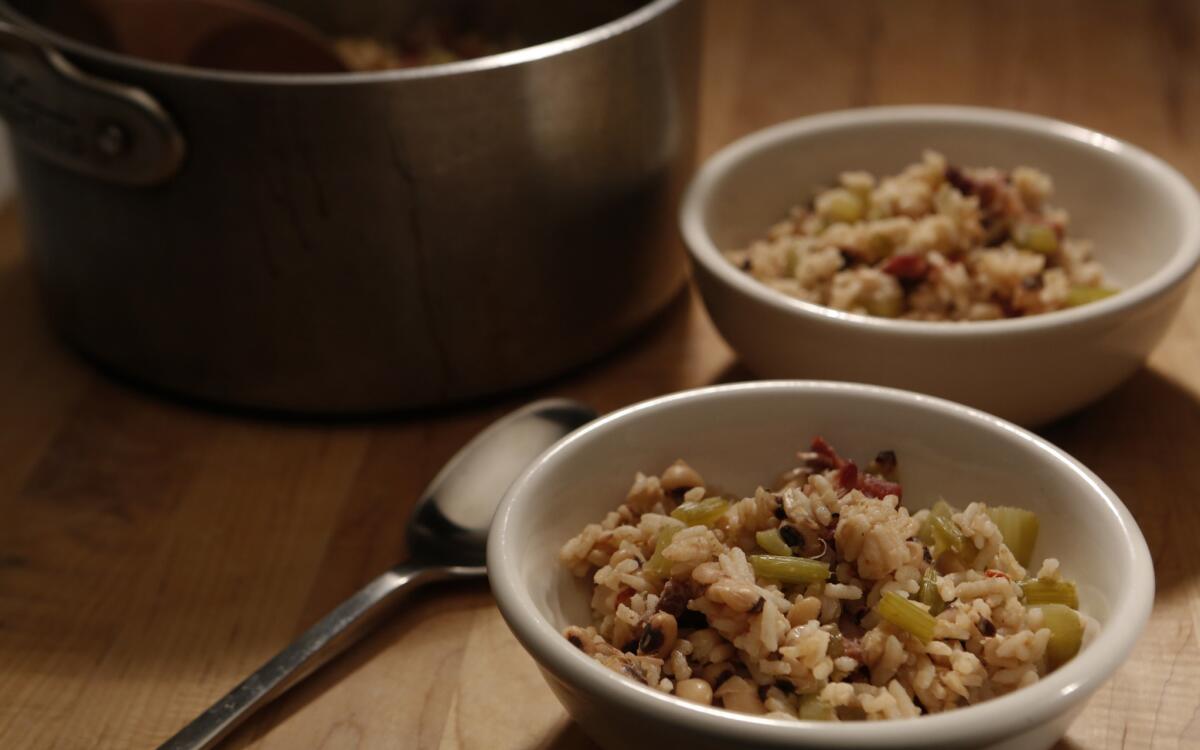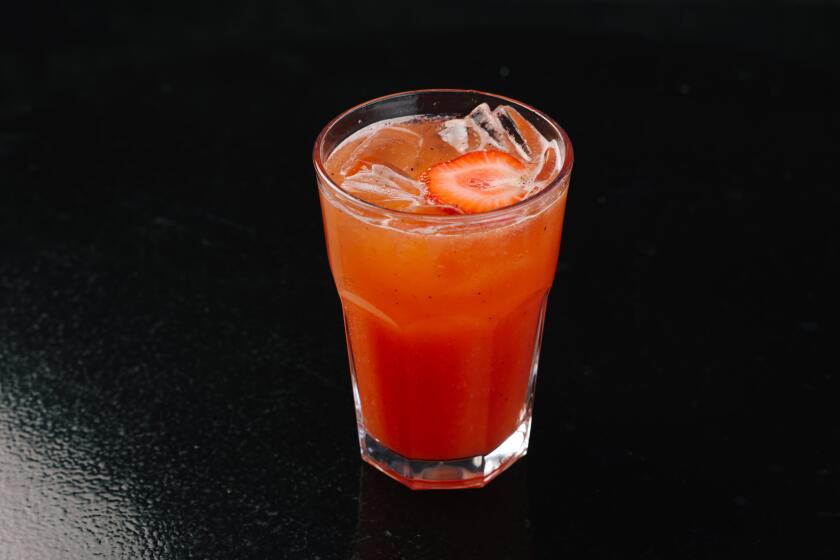Jonathan Gold's Hoppin' John

As a cook who is rarely happier than when roasting a huge joint of meat, I tend to measure out my year in holiday feasts, the same meals every year. Christmas dinner means goose; New Year’s Eve, rib roast and Yorkshire pudding; Easter, leg of lamb. I sometimes try my hand at odd holidays like Diwali and Nowruz just because — holiday food is always festive and is always an excuse for a party. Christmas Eve tends to revolve around menudo and tamales at my mother-in-law’s house, but I yearn to have a go at the Italian Feast of Seven Fishes.
So while I am an Angeleno born and bred, for some reason New Year’s Day at my house always means hoppin’ John, the starchy stew of black-eyed peas and rice that is the New Year’s dish across most of the South, as well as vast pots of collard greens, goose-fat red beans, and the seafood gumbo my friend Jervey makes at my stove. New Year’s Day leans Southern. Hoppin’ John is the perfect dish for a lazy, gracious open house. It tastes good with either bourbon or Champagne.
The black-eyed peas, which resemble coins if you squint a little, are supposed to represent money in its abstract form. The collards represent folding green.
I make the hoppin’ John with country ham from Kentucky if I have it and good city ham if I don’t, with store-bought black-eyed peas when I haven’t remembered to order the red peas from Anson Mills, and with a clumsy mirepoix that somehow resolves itself into deliciousness by the time the dish finishes simmering. The traditional recipe calls for a single dried pepper added to the peas, but I like to believe that it is only because 19th century Charlestonians did not have ready access to squeeze bottles of Sriracha. If you pre-soak the peas for an hour or two, the hoppin’ John cooks in just a few minutes, but it cooks quickly enough even if you don’t.
And while nothing brings out the sweet earthiness of black-eyed peas like a good piece of ham, it is easy enough to jimmy up a parallel version of hoppin’ John for vegan friends if you leave out the meat and finish with a bit of Spanish smoked paprika instead, which gives the dish a jolt of tapas-bar smokiness instead of the feral animal notes of long-boiled pig.
In a large saucepan, combine the ham hock and water and bring to a boil. Skim any foam, then reduce the heat to medium-low and simmer for 30 minutes.
Wash and sort the peas. Add them to the saucepan and discard any peas that float. Stir in the sambal oelek, onion, celery, bay leaves and thyme, and simmer uncovered, until tender but not mushy, 1 to 1½ hours. There should be 2 cups of liquid remaining (add more water, if needed, to make up the difference).
Remove the ham hock, shred the meat and stir the meat back in with the beans, along with the rice. Cover and simmer over low heat for about 20 minutes, never lifting the lid.
Remove from the heat and set the pan aside so the food will steam, still covered, for 10 more minutes. Remove the cover, fluff with a fork, and serve immediately.
Get our Cooking newsletter.
Your roundup of inspiring recipes and kitchen tricks.
You may occasionally receive promotional content from the Los Angeles Times.
















